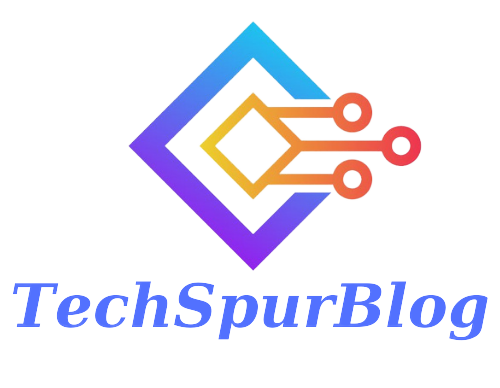Introduction
In the constantly evolving realm of technology, two sectors have emerged as particularly influential: the realm of data science and the field of robotics. These two domains, though separate in their own respects, are increasingly coming together, resulting in thrilling progress that is reshaping numerous industries. This piece delves into the interdependent connection between data science and robotics, showcasing how these two disciplines are intertwined and are molding the future of technology.
Understanding the Fundamentals
Prior to delving into their interrelation, it is essential to comprehend the essence of these two domains. Data analytics is a multidisciplinary realm that employs scientific approaches, methodologies, algorithms, and frameworks to derive comprehension and understanding from organized and disorganized data.
Conversely, automation encompasses the conception, formation, functioning, and utilization of automatons. It amalgamates disciplines such as computer science, mechanical and electrical engineering, and artificial intelligence (AI) to fabricate mechanisms proficient in executing intricate tasks autonomously.
Also Read: What is Data Science and how can it be applied to Marketing Strategy?
Data Science: The Brain Behind Robotics
Robotic systems generate and collect a large amount of data during their operations. This data, when analyzed and interpreted correctly, can improve the efficiency, performance, and adaptability of these systems. Here is where data science plays a crucial role. By leveraging algorithms and computational intelligence, data science helps decipher meaningful patterns from the vast amount of data generated by robots.
Through machine learning, a subset of AI, data scientists can train robots to learn from their experiences. The ability to learn from data allows robots to adapt to new scenarios, predict future events, and improve decision-making processes. For instance, in manufacturing, robots equipped with machine learning algorithms can optimize production lines by predicting and preventing potential malfunctions.
Robotics in Data Science: Automating the Process
Conversely, robotics also plays a significant role in data science. Robots can automate the process of data collection, thus reducing human error and increasing the speed and efficiency of data acquisition. For example, in the field of oceanography, underwater robots are used to collect data about marine life, water quality, and seafloor topography.
Robotic process automation (RPA) is another area where robotics is being applied in data science. RPA involves using software robots or “bots” to automate routine tasks typically performed by humans. These bots can manage data, handle transactions, and even communicate with other digital systems, thus freeing up time for data scientists to focus on more complex tasks.
The Future of Data Science and Robotics
The amalgamation of data science and robotics has broad implications for various sectors. In healthcare, for example, robotic surgery coupled with data science is revolutionizing patient care. Robots can perform surgeries with greater precision and fewer complications, while data science helps in predicting patient outcomes and personalizing treatment plans.
Education is another sector where this symbiotic relationship is making an impact. An increasing number of students are enrolling in Data Science Courses to gain skills in machine learning, AI, and robotics. These courses not only provide a strong theoretical foundation but also offer hands-on experience working with real-world data and robotic systems.
Also Read: he Power of AI Tools That Will Revolutionize Your Daily Routine
Data Science and Robotics in Everyday Life
While the integration of data science and robotics might seem like a concept straight out of science fiction, it’s interesting to note that it has found its way into our everyday lives. Personal assistant devices like Amazon’s Alexa and Google Home are examples of this merger. These devices use natural language processing, a data science technique, to understand voice commands. Simultaneously, they leverage robotics principles to interact with other devices, such as smart home systems, demonstrating a seamless integration of the two fields.
Automated vacuum cleaners, like Roomba, also use data science and robotics. They employ sensors (an element of robotics) to navigate around obstacles and clean efficiently. Data science is used in these devices to learn and remember the layout of a home, optimize cleaning paths, and even predict areas that might require more frequent cleaning.
Data Science and Robotics in Business
In the business world, the synergy between data science and robotics is redefining operational efficiency and customer experience. E-commerce giants like Amazon use robotic systems in their warehouses to sort, pack, and ship products. These robots generate large volumes of data, such as speed, efficiency, error rates, etc. By applying data science techniques to this data, Amazon can identify bottlenecks, optimize robot paths, and increase overall warehouse efficiency.
Moreover, businesses are using chatbots to improve customer service. These chatbots use natural language processing and machine learning (subsets of data science) to understand and respond to customer inquiries. Robotics principles are used in designing these chatbots to interact with customers in a human-like manner, providing a personalized customer experience.
Data Science and Robotics in Healthcare
One of the most significant sectors is where data science and robotics have made substantial inroads in healthcare. Robotic-assisted surgery has been a game-changer, allowing surgeons to perform complex procedures with more control, flexibility, and precision than traditional techniques. Data generated during these surgeries is collected and analyzed using data science methodologies to track patient recovery, predict potential complications, and inform postoperative care.
Beyond surgery, robotic devices are increasingly being used in physical therapy and rehabilitation. For instance, robotic exoskeletons can aid in the recovery of individuals who have suffered strokes or spinal cord injuries. Data science plays a pivotal role in these applications by analyzing patient data to personalize therapy plans, track progress, and adjust treatments as necessary.
Moreover, data science and robotics are combining to transform patient care at home. Robotic caregivers are being developed to assist with tasks like medication management, meal preparation, and mobility support. These robots can collect data on patient health and daily routines, enabling healthcare providers to monitor patient wellbeing remotely and intervene promptly when needed.
Also Read: Chatbots of Tomorrow: Exploring the AI Revolution
Conclusion: The Power of Convergence
In summary, the overlap of data science and robotics extends beyond advanced laboratories or industrial environments. It is a component of our daily existence, encompassing the gadgets we utilize in our households and the services we avail. Furthermore, enterprises are utilizing this fusion to enhance efficiency and enhance customer satisfaction.
By enrolling in a Data Science Program, individuals can acquire the expertise necessary to make meaningful contributions to this thrilling domain. Similarly, businesses can utilize Applied Data Science to extract optimal benefits from their automated systems. As we persist in innovating and pushing the limits of these disciplines, the potential appears boundless.
Nisha Nemasing Rathod works as a Technical Content Writer at Great Learning, where she focuses on writing about cutting-edge technologies like Cybersecurity, Software Engineering, Artificial Intelligence, Data Science, and Cloud Computing. She holds a B.Tech Degree in Computer Science and Engineering and is knowledgeable about various programming languages. She is a lifelong learner, eager to explore new technologies and enhance her writing skills.






